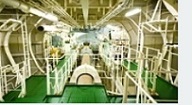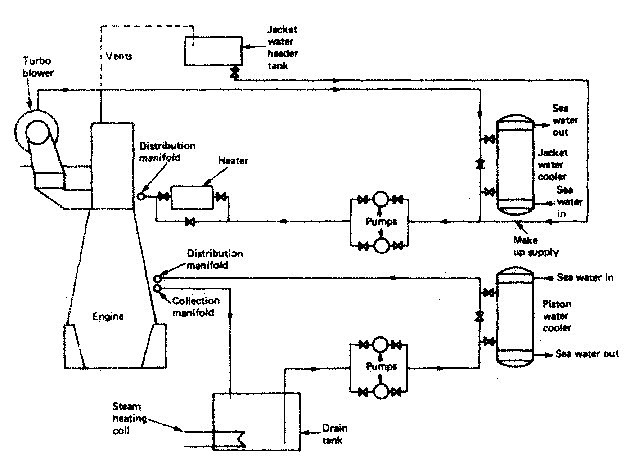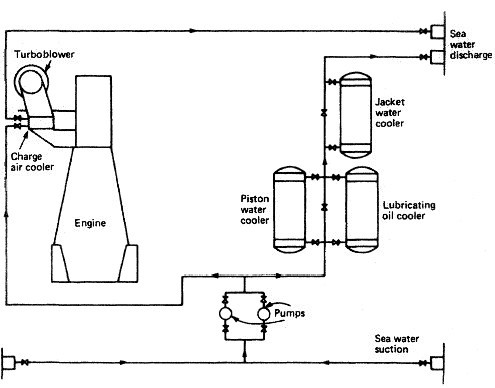
Fresh water & Sea water Cooling System for Marine Diesel Engine
Cooling of engines is achieved by circulating a cooling liquid around
internal passages within the engine. The cooling liquid is thus heated up
and is in turn cooled by a sea water circulated cooler. Without adequate
cooling certain parts of the engine which are exposed to very high
temperatures, as a result of burning fuel, would soon fail.



